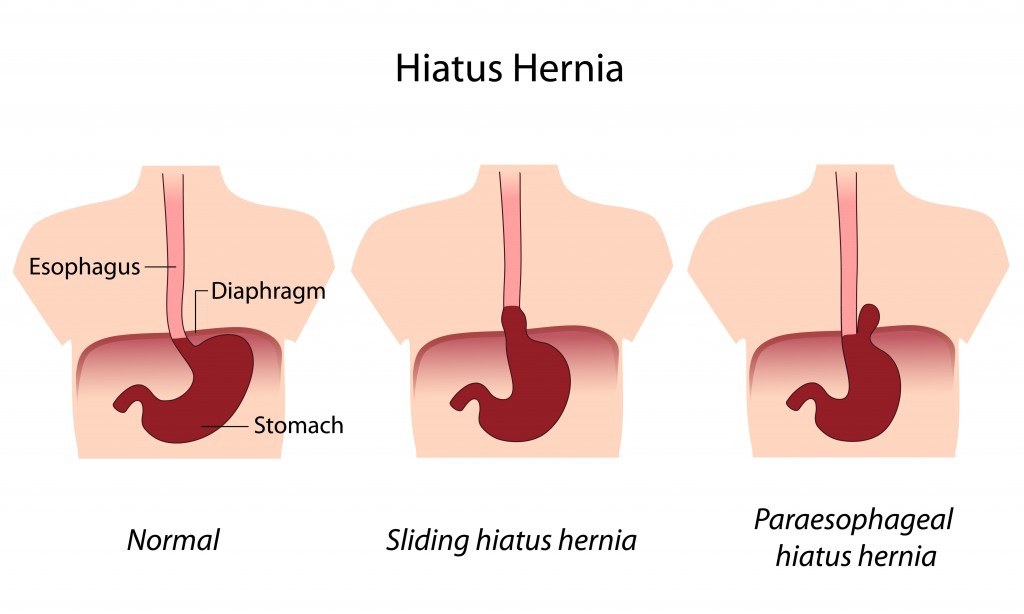- A hiatal hernia can be another factor affecting acid reflux and symptoms of heartburn.
- A hiatal hernia occurs when the opening in the diaphragm allows the stomach to protrude into the chest cavity. This hole in the diaphragm, called the “hiatus” holds the esophagus in place near the connection to the stomach.
- When the hiatus becomes weakened it no longer supports the esophagus securely in its proper position. Dysfunction may occur at the lower esophageal sphincter causing acid reflux.
- A sliding hiatus hernia results when the stomach slides through the opening in the diaphragm.
- A paraesophageal hiatus hernia is the most serious type as a pouch of stomach tissue drawn out of the diaphragm becomes at risk of pinched off circulation.

